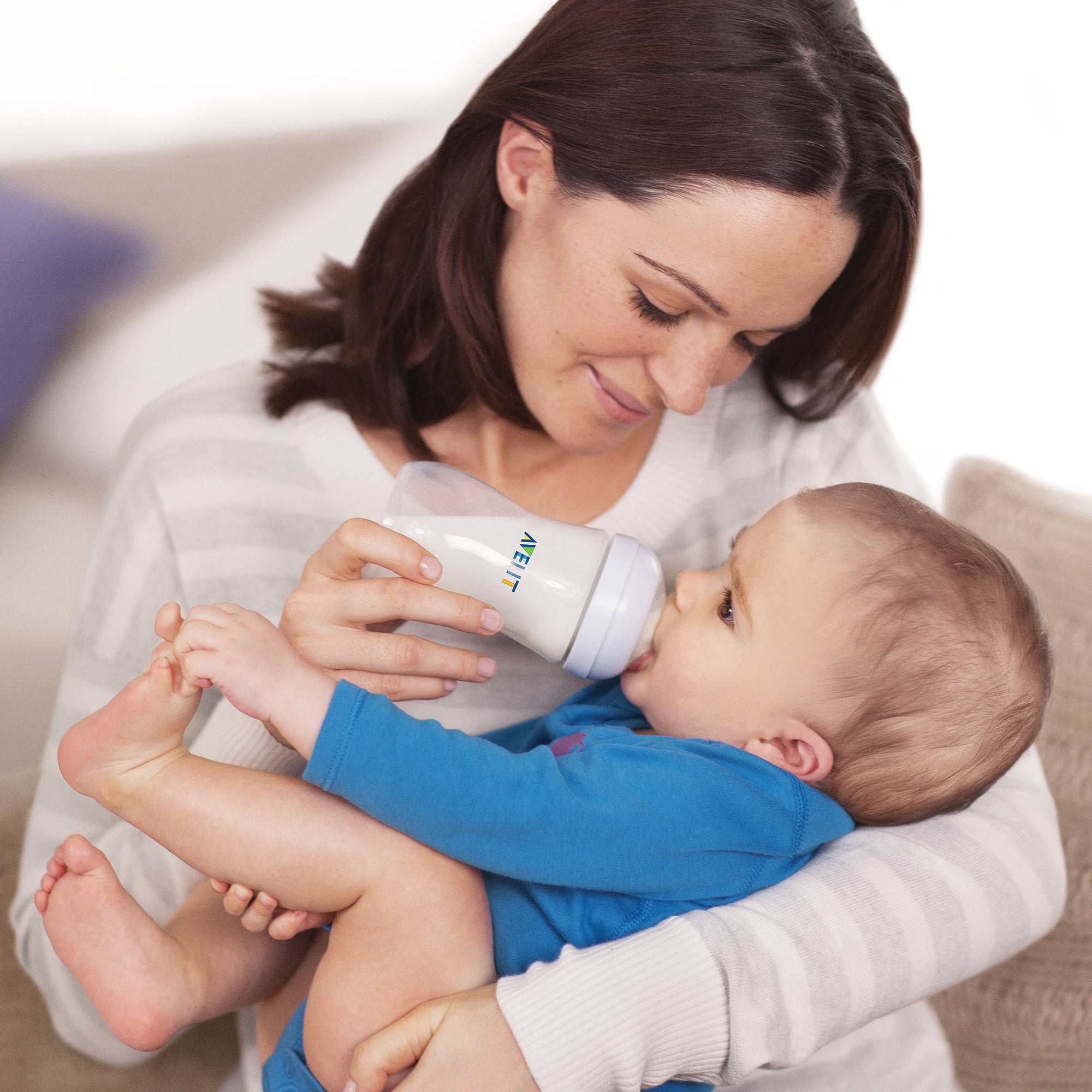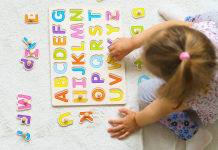If you’re a new parent, you’re likely worrying about a million things when your baby comes home from the hospital. Gaining enough weight, watching temperature, figuring out days/nights – its endless. If you’re anything like me, you might also be obsessing over the shape of your baby’s head! As a pediatric occupational therapist, my clients often ask about this issue. I tell them to speak with their pediatricians, but also provide information about a condition known as torticollis.
Torticollis is a condition where a baby turns its head to one side, favoring it.
This condition is often due to a shortening in the neck muscles on that side. Over time, continued pressure on the head can result in a flat spot on the skull. Torticollis can be congenital, due to the baby’s position in the womb, or from something that happens during birth. Medically, flat spots on the head are called positional plagiocephaly. This often happens because babies sleep in the same position, with the back of their head against the mattress. Currently, pediatricians screen babies for these conditions and make referrals to physical therapy to help treat them.
Be informed
Many parents have never heard of torticollis or plagiocephaly. Torticollis that starts in the womb can’t be prevented by an expectant mother, or a medical professional. Therefore, it is important to learn what you can do to avoid prolonged problems after birth. It’s scary to think that your infant’s sleeping position could impact not only head shape, but also in severe cases cause asymmetry in eyes and ears or even disordered vision and hearing. But there are many things you can do at home to help your baby!
Take Action
- Tummy Time. – The “Back to Sleep” Campaign that the American Academy of Pediatrics launched in the 90s drastically reduced SIDS related deaths. It also sparked the need for tummy time to get babies out of that prolonged position for sleep. I provide more information on tummy time here.
- Varied Positions. – Get your baby off his back – even in their car seats or swings, babies are still putting pressure on the back of the head. It is very important to wear your baby in different positions (facing in/out, in a sling, etc) and to encourage caregivers to hold your baby upright.
- Feeding/Diapering/Sleep. – Babies are often fed or changed in the same position because that’s what is convenient for the parent/caregiver. It is important to be aware of the baby’s head position during these important times of care giving! Try alternating sides (even if it takes you more time) so that she turns her head in both directions during these tasks. Even in the crib – babies will naturally turn towards a light source (window) so change the end of the crib where you place their head so that they get practice turning both ways.

- Visual Props. – In addition to the human face, babies love high contrast images from birth because that’s what their visual skills allow them to process. I love the Wee Gallery Art Cards and Wimmer-Ferguson developmental toys to add to playtime. You can put one of the art cards on the wall near the changing table, or crib to offer a visual stimulus for your baby to look up and in different directions. Add them to your tummy time routine too.


Don’t wait…..
If your pediatrician brings up a concern relative to torticollis or plagiocephaly, please don’t take the ‘wait and see’ approach. Start treatment as soon as possible. Physical therapists have methods to measure how severe the condition is, and if mild, may simply make suggestions about positioning at home. Therapists often suggest stretching exercises to encourage the baby to look in the opposite direction. It’s important to get a baseline for the condition and follow up to monitor progress. In some severe cases pediatricians and therapists recommend using a helmet that physically shapes the baby’s head by keeping it off that flat area.










